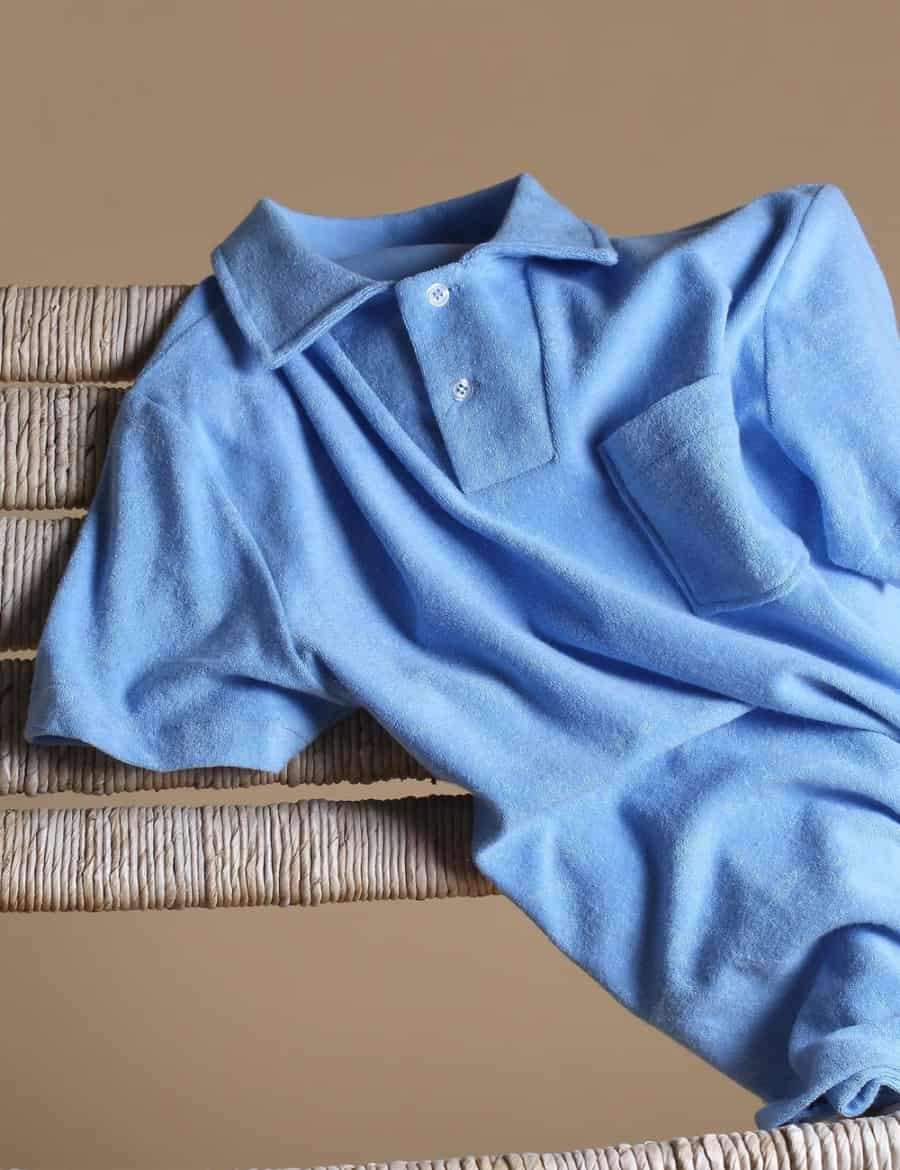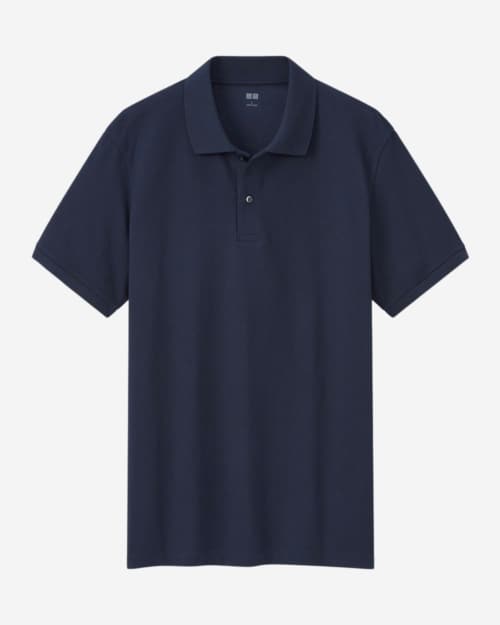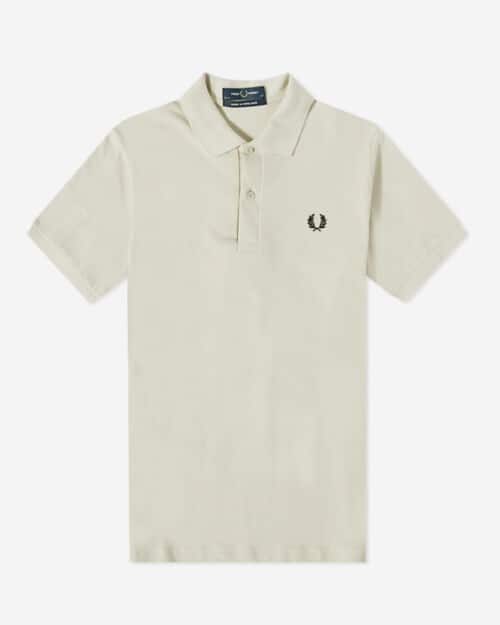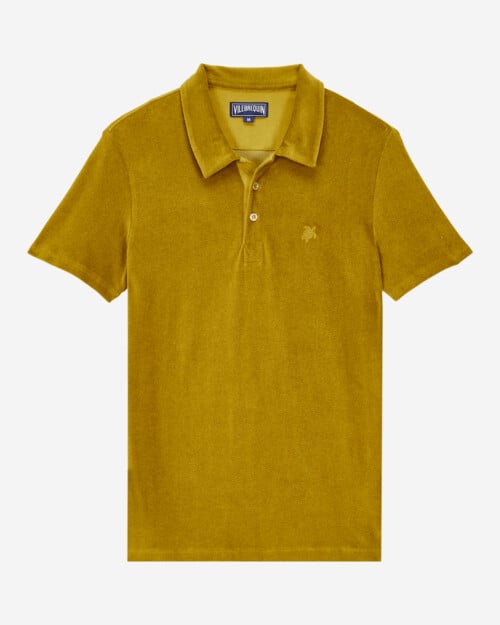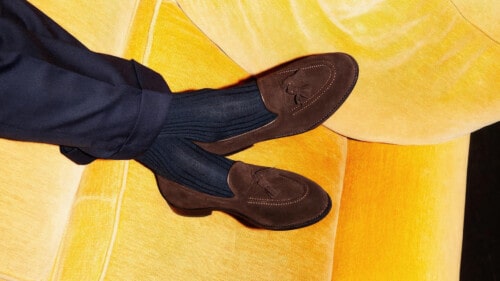The Best Men’s Polo Shirts Guide You’ll Ever Read
The polo should a core piece in your warm-weather wardrobe - here's exactly what to look for and the labels making the most stylish versions this season.
A T-shirt with a collar. What more is there to say about the polo shirt? Well, actually, quite a bit.
The polo shirt – that iconic open-weave cotton jersey top with a soft rolled collar and a three-button placket-front – is one of the most democratic pieces of menswear, as much at home on the tennis court as it is under a suit or on the biggest fashion runways.
With a timeless and ageless appeal, the polo does that very difficult job of binding the worlds of sport, style and fashion with aplomb. And as you’ll find out, it is so much more than a T-shirt with a collar. In fact, today’s polos are more diverse than ever, constructed from myriad fabrics and not just the classic cotton piqué.
This summer, the polo should be one of the core pieces in your warm-weather wardrobe – here’s exactly what to look for.
What to know before buying a polo shirt
So you’re in the market for a polo or two… where do you start? First off, decide how you’re mostly going to be wearing your polo shirt because that will ultimately determine the fit, fabric and style you go for.
If your wardrobe leans smart, then you might want to steer yourself towards merino wool or cashmere styles with a three-button placket or even a resort collar. More sporty? A little zip-neck ticks that box. Casual vibes? Then you’re looking at the classic cotton piqué style.
The cheat sheet below will give you some clarity as to what to look for.
Fabric choice
Cotton piqué
The much-loved modern polo shirt fabric, cotton piqué – otherwise known as ‘marcella’ – was actually first developed in the 18th century and by all accounts in Lancashire.
Its most obvious characteristics are the raised parallel cords, which create a variety of textures, from honeycomb to waffle.
With the weave being quite open, it’s extremely breathable and therefore a great option for summer. A ribbed collar and armbands is also typical of this style.
Cotton jersey
The difference between standard cotton and cotton jersey is that the latter is knitted, giving a much softer and more breathable finish.
Typically reserved for luxury polos, it feels much like a wool style but without the eye-bleeding price tag.
It’s a great option for wearing with tailoring or separates, when you want to put together a more polished casual style.
Cashmere & merino wool
As great as cotton is, when you try on your first knitted cashmere or merino polo, you’ll never go back. Ludicrously soft and tactile, they are both amazing polo shirt fabrics to wear on their own in the evening or with relaxed tailoring.
Although you’ll often read about wool’s amazing moisture-wicking, breathable characteristics, don’t believe a word of it – you’ll sweat like crazy on a hot day, so keep these for cool evenings.
Linen
Made from flax fibres, linen is one of the most sustainable natural fibres and revered for its soft, lightweight cloth and slubby textural finish.
It’s ideal for open neck polos and camp collar styles given its lack of structure (hence why you’ll often find it blended with cotton).
It’s also very versatile, able to be worn with a pair of tailored beach shorts or a casual unstructured jacket.
Terry cloth
Terry cloth is often pigeonholed as merely a poolside fabric (because it’s amazingly absorbent), but this tactile cotton weave is a perfect addition to your polo shirt arsenal.
Terry has been made since the 1840s and features uncut loops that stand up from the base, giving it that unique pile that makes for a useful contrast against other elements of your look.
It’s a brilliant textural switch-up for standard cotton and works really well in resort wardrobes where you don’t mind it getting damp.
Silk
The daddy of polo shirt fabrics, silk versions are relatively uncommon outside of the most high-end brands (think Brunello Cucinelli, Tom Ford, Loro Piana et al.) and take you into proper baller territory.
Made from silk worms fed on a diet of mulberry leaves, silk is incredibly soft and strong, with types like shantung having a similar slubby finish to linen.
Yes, you’ll pay through the nose for a silk polo but smugness on that level is worth every penny.
Polo shirt style
Plain
In style as in life, less is often more, which is why the plain polo always punches above its weight. There isn’t a colour on this earth that hasn’t been ascribed to a polo shirt so you’ll never be short of options on that front.
Merino and cashmere styles tend to stay in the dark muted range of navy and charcoal, whereas cotton piqué takes dye very well so expect the whole rainbow.
A number of polo brands include a contrast tramline on the collar and/or sleeves, giving it a more casual, sportier edge, or they’ll use tonal effects on the collar, placket and hem for a smarter finish.
Patterned
Patterned polos aren’t as common as you might have thought, simply because the structure and function of the polo doesn’t really require any extra embellishment.
It is a plain garment at heart, but you can certainly find styles with preppy colour blocks and stripes.
Probably the most common are cotton jacquard styles (jacquard is just the term for a decorative design made on a jacquard loom), which can consist of quite intricate patterns slightly raised from the base fabric.
Our favourite though are polos with vertical stripes, which somehow add a slightly louche sartorial touch.
Knitted
Whether in cotton or cashmere, knitted polos bring softness and texture to the polo party. Smarter and more sophisticated that the common cotton piqué polo, knitted versions work a dream under tailoring, creating an interesting contrast thanks to the tactile handle.
By definition, knitted collars are devoid of structure so opt for open collar styles (see below).
Collar type
Button placket
The most common of necklines, the button placket typically consists of two or three buttons and a soft turn-down collar.
If you’ve ever owned a polo shirt, you’ll know just how frustrating the collar can be, loosing the fold after a wash and curling at the edges. This can be avoided by looking for shirts with an interlining in the collar, which adds a little extra stiffness to help keep the shape.
Open neck
If the button placket is the classic polo set-up, then the open neck variant is like the wayward younger brother who makes his own rules.
It can come in the form of a resort collar, single-button loop closure or Cuban/camp collar, with each one having its own unique level of casual cool.
When worn with relaxed tailoring, they definitely bring 80s Miami vibes, which is no bad thing.
Zip neck
A modern alternative to the traditional button placket, the zip neck borrows from sportswear pieces such as track tops, giving it an athletic look that is easy to wear.
The zip is typically short, a similar length to a button placket, but you can also find more contemporary zip-through styles that you can wear open with a vest or plain white T-shirt.
The best men’s polo shirt brands for 2024
Sunspel
Hailing from Nottingham, England, Sunspel was founded in 1860 by Thomas Hill and has since become renowned for its high-quality staples, not least the Riviera polo, worn by a certain British spy by the name of Bond, James Bond, in Casino Royale (2006).
Sunspel’s Riviera polo is cut from high quality cotton mesh that drapes really naturally with a slim fit.
Luca Faloni
Direct-to-consumer brand Luca Faloni works with local Italian artisans to make its garments, all of which are handmade using the finest fabrics and yarns on earth.
Its polo shirts are no exception, cut from sumptuous silk-cotton and cashmere-cotton blends (both of which are surprisingly affordable compared to traditional luxury brands) as well as classic pique and a summer-ready linen-jersey mix.
Available in long- and short-sleeve silhouettes and a wealth of colourways, the cut is slim and craftsmanship second to none.
The Resort Co.
The Resort Co was founded in 2019 with the mission to craft the perfect vacation wardrobe – the type of clothing you reach for summer after summer. And it’s safe to say they succeeded.
Offering a small but perfectly curated selection of resortwear, the range oozes sophistication, with linen pants, Cuban collar shirts and tailored swimwear helping to create the type of aesthetic you’d expect to see across the French and Italian Riviera.
The polo shirts don’t let the side down, either. Coming in extra soft terry cloth or knitted organic cotton, each style is handcrafted in Barcelos, Portugal and cut slim for an elegant look. Team them with a pair of well-cut shorts and loafers for your own take on Mediterranean style.
ASKET
In a stark show of self-awareness, which is often lacking in this industry, ASKET recognises that the world doesn’t need another fashion label, what with the impact it has on the earth’s resources.
Therefore, the Swedish brand does things slightly different. It only creates what it dubs, ‘meaningful essentials’ – i.e. the core garments that every man needs and will never fall out of style. Of course, the polo sits right in this remit, and ASKET has been refining its version of it since 2016. And you can tell.
This is the type of polo that will set the foundation of any minimalist wardrobe. Coming in a weighty 200gsm custom knit organic cotton, it features a straight cut, a clean French three-button placket and tonal detailing.
Available in five versatile neutrals and both long- and short-sleeve designs, you’d be wise to stock up.
Aurelien
Aurelien believes in the concept of smart luxury, which is what it defines as the intersection between Mediterranean style, Italian craftsmanship and the finest natural materials.
As you would expect then, its polo shirts ooze sophistication. Coming in elegant pastel shades and timeless neutrals, they’re cut from a wide range of premium fabrics – including Egyptian cotton, terry towelling, pure cashmere and 100% linen – then made by hand in small Portuguese workshops.
You’d likely think that you’d have to pay through the nose for this level of quality. However, by cutting out the middleman the brand is able to many styles for under $150, which represents superb value for money.
Polo Ralph Lauren
What needs to be said about Polo Ralph Lauren? The brand that took preppy mainstream with its classic three-button polos is still the go-to label for cotton piqué styles in every colour under the sun.
That logo on the left side of the chest stills carries as much cachet as it ever did.
Uniqlo
Uniqlo’s minimalist aesthetic was always going to be a winner when it came to polo shirts.
The Japanese casualwear giant does a fine line in polos, from classic cotton piqué styles to knitted merino versions and high-performance fabrics, all at crazy good price points.
Always keep an eye out for their collabs, too.
Fred Perry
Much like René Lacoste, Fred Perry launched his famous laurel wreath polos for games of tennis, but they were quickly appropriated by numerous British subcultures right the way through the 60s to the 90s.
With that iconic tipping on the collar and/or sleeves, Perry’s polos have a sophisticated sportiness to them and a cultural significance that most brands wish they had.
Vilebrequin
Founded in 1971 by the enigmatic Fred Prysquel, luxury resortwear brand Vilebrequin has become synonymous with vibrant prints, bold geometric patterns and a kaleidoscopic palette that’s not for the shy and retiring.
The brand began life in St. Tropez, which must in some part account for its well-heeled international clientele and proliferation at the world’s high-end resorts.
It’s polo shirts, then, are ideal for hot weather, crafted from quality 100% cotton and available in a variety of vacation-ready shades like cobalt blue and sunshine yellow.
They make the perfect accompaniment to the brand’s high-end swimwear.
Lacoste
That iconic crocodile came about as a nickname Lacoste picked up after winning a wager with the captain of the French Davis Cup team, in which the prize was an alligator-skin suitcase.
Ever since it has had pride of place on Lacoste’s cotton petit piqué polos, which come in myriad colours. Mother of pearl buttons as standard.
Gucci
While the Italian luxury brand might be better known for its maximalist collections created by Alessandro Michele, its seasonal polo shirts have serious fashion cachet. They don’t look too shabby either.
Often featuring the geometric logo print or the iconic Gucci red and green in contrast collars and armbands, these are polo shirts for people who like audiences.
Orlebar Brown


Looking for a polo for your next bouji summer holiday? Luxury resortwear specialists Orlebar Brown can equip you with some stunning slim-fit designs in every configuration imaginable – think terry cloth, linen, cotton piqué, button placket, zip neck, resort collar, you name it.
Super sophisticated and versatile too, they’ll double-up nicely as beachwear and casualwear.
James Perse
LA’s maverick of minimalism of course does great polos, just don’t expect a kaleidoscope of colours. In fact, just expect grey, white and black.
Nevertheless, Perse’s polos come in a variety of cotton jersey styles, including a sueded option that has a unique tactile finish, as well as a super-soft brushed cotton version.
Manna from heaven if you’re into pared-back style.
Brunello Cucinelli


What you lose in personal wealth you get back in pure fabric indulgence wen you purchase a Brunello Cucinelli polo shirt.
The Italian designer and purveyor of some of the finest clothes on earth naturally also produces some pretty smooth polos in cotton piqué and cotton jersey.
Cucinelli often uses a shirt collar style that has more structure than your typical ribbed collar version, so they team well with suits and tailored separates.
John Smedley


For over 200 years, John Smedley has been designed and manufacturing some of the world’s best knitwear out of Derbyshire, UK.
And while knits are what the company is best known for, do not sleep on its exquisite long-sleeved polos constructed from a blend of extrafine merino wool and Sea Island cotton.
Insanely soft and super polished beneath an unstructured linen blazer.
The history of the polo shirt
Although tennis took the garment mainstream, the earliest iterations of the polo shirt were borne of military origins, like so many other menswear items that have stood the test of time.
They can be traced back the British colonialists in late 19th century India, who found that their regular issue shirts were no good for playing polo in when off-duty since the collar points would flap in their faces.

Vintage Brooks Brothers advertisement for its ‘polo shirts’
Hence, necessity gave rise to the button-down collar, which was truly the first ‘polo’. Of course, the Oxford cloth button-down, or OCBD as we like to call it, is a very different shirt from what we know as the polo.
This is due to the smarts of an American businessman by the name of John E. Brooks, the grandson of Henry Sands Brooks, who founded the Brooks Brothers company in 1818.
Brooks the grandson, like many ambitious Americans at the time, was a fan of the styles, culture and mores of the English upper crust. While on a trip to the UK in the 1890s, Brooks discovered these new ‘polo shirts’ being worn by society’s movers and shakers, and immediately began to produce his very own version when he returned to the States.
The Brooks version was still an evolutionary step away from the sporty version we know of today. For that part of the evolution, we must hop back over the pond to France, where a certain Mr Lacoste was ‘insatisfait’ with his tennis attire.

Buddy Austin (left) and Rene Lacoste (right) before a match, 1928.
René Lacoste was the R-Fed of the 20s, accumulating Grand Slam after after Grand Slam, and while his sporting notoriety was at its peak, his entrepreneurship was only just getting started.
Lacoste was a visionary in many ways, but not least for understanding the potential of sports branding and how persuasive sports stars could be in selling clothing to the masses. So while all his contemporaries wore a long-sleeved shirt to play in, Lacoste broke rank and designed his own short-sleeved, open-weave cotton style, and so was born La Chemise Lacoste.
The polo shirt’s addendum was written by Ralph Lauren, who saw a prime opportunity to capitalise on the preppy popularity of polo shirts and so launched his own line in 1967.
To say that Polo Ralph Lauren was a success is an understatement. Lauren single-handedly made the polo an iconic piece of modern Americana and a must-have garment for cool collegiate types and upwardly mobile Americans.
Like Lacoste before him, Lauren made the brand logo on the left chest an emblem of taste, but in an era that was fast commercialising anything and everything.
Today, as proven above, polo shirt brands old and new are creating luxury styles that doff their caps at the original cotton piqué style. But they’re also evolving the polo with sumptuous fabrics and new collar configurations that make this humble ‘T-shirt with a collar’ far more important than it might at first seem.





